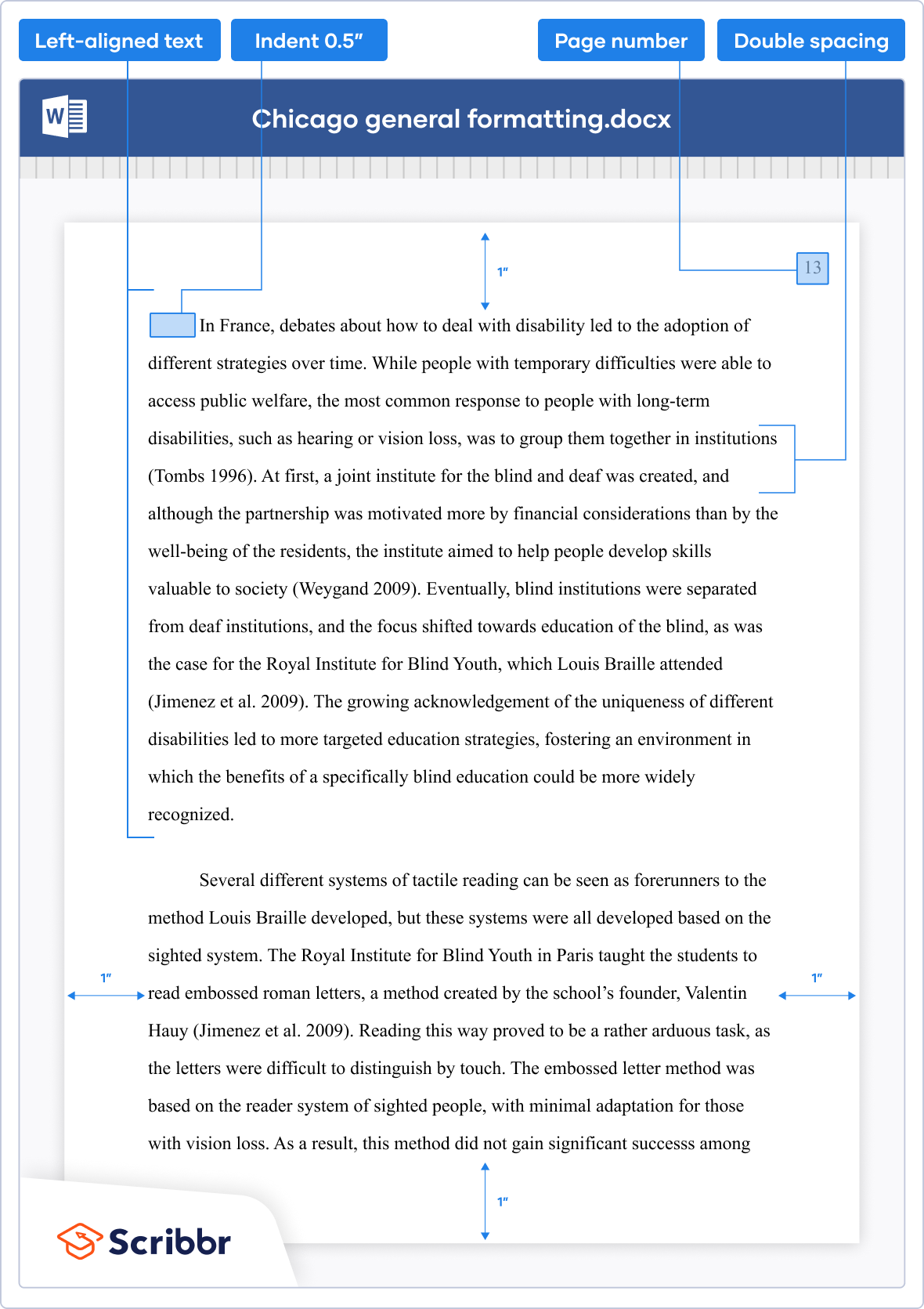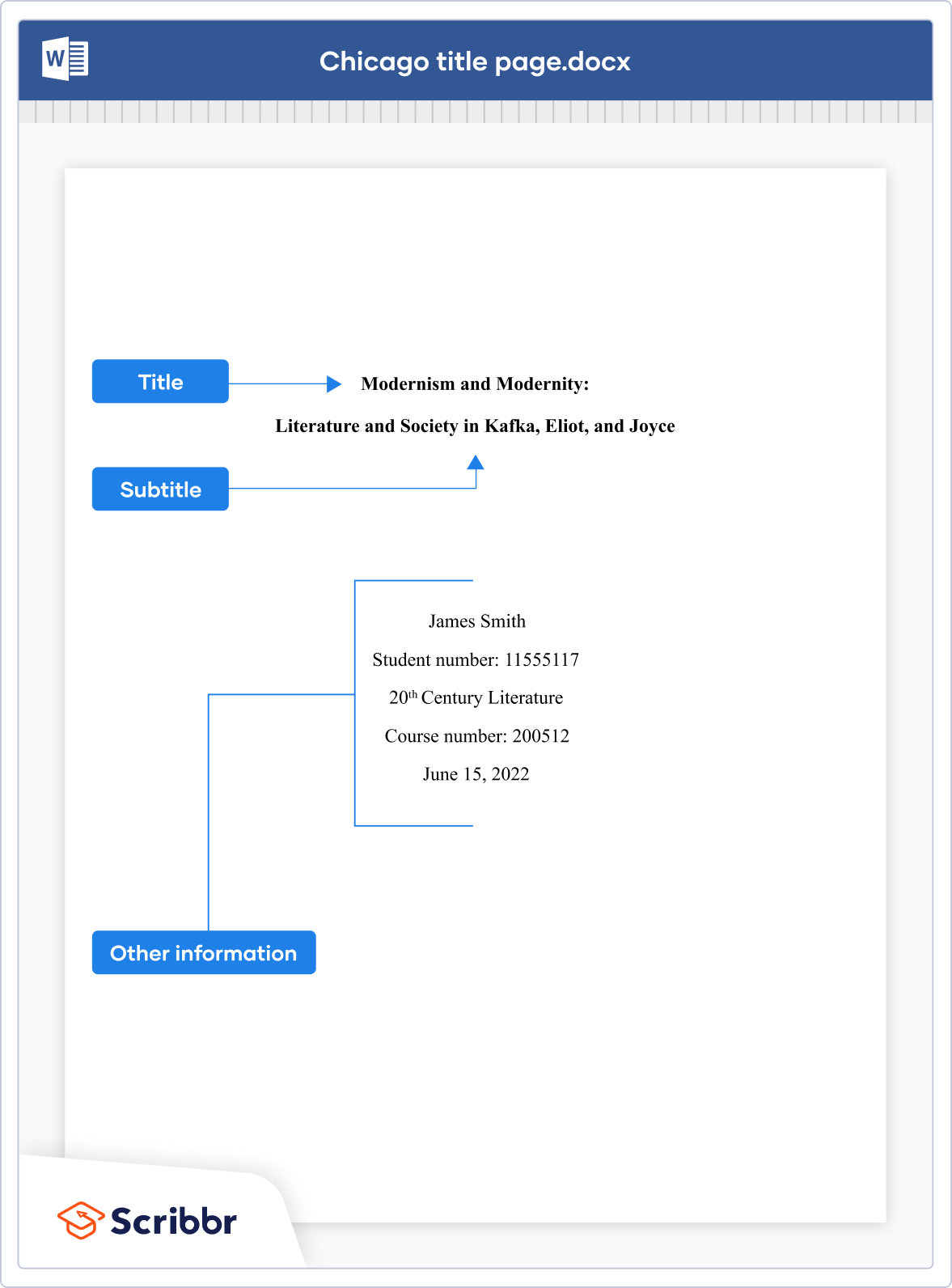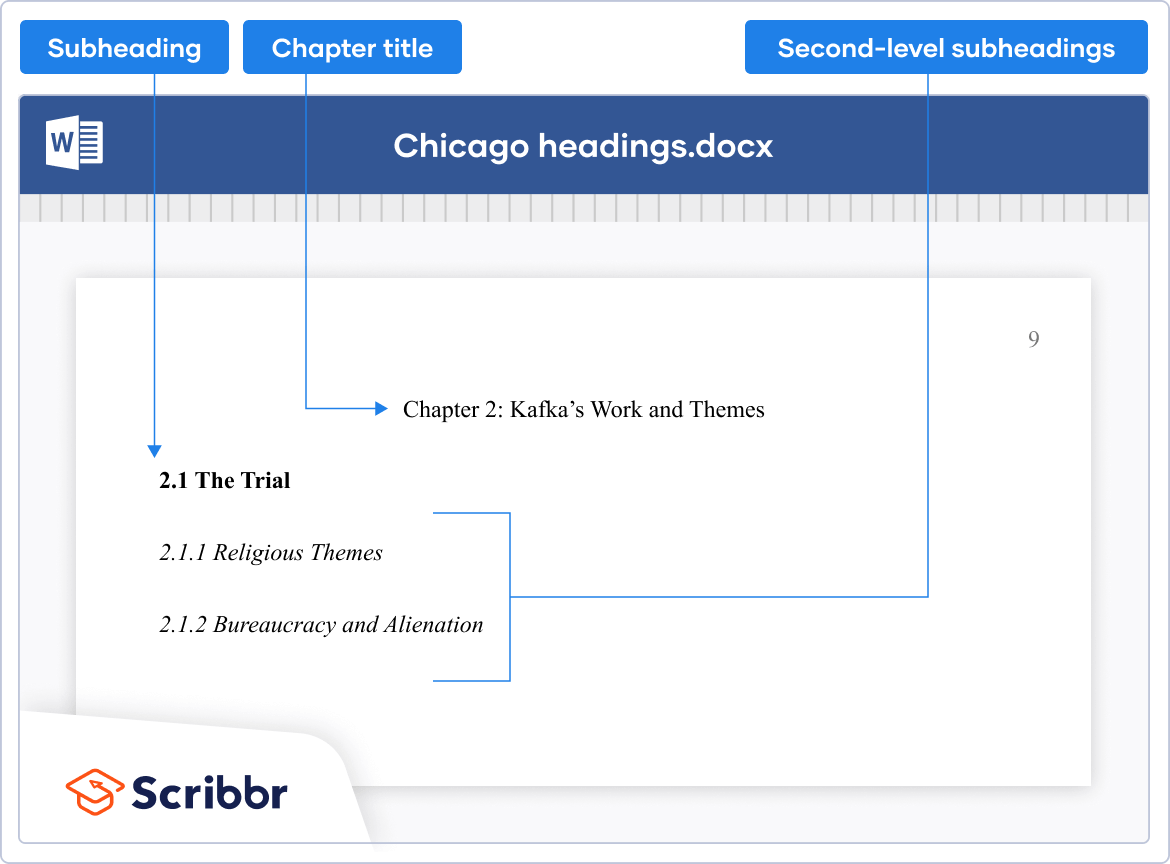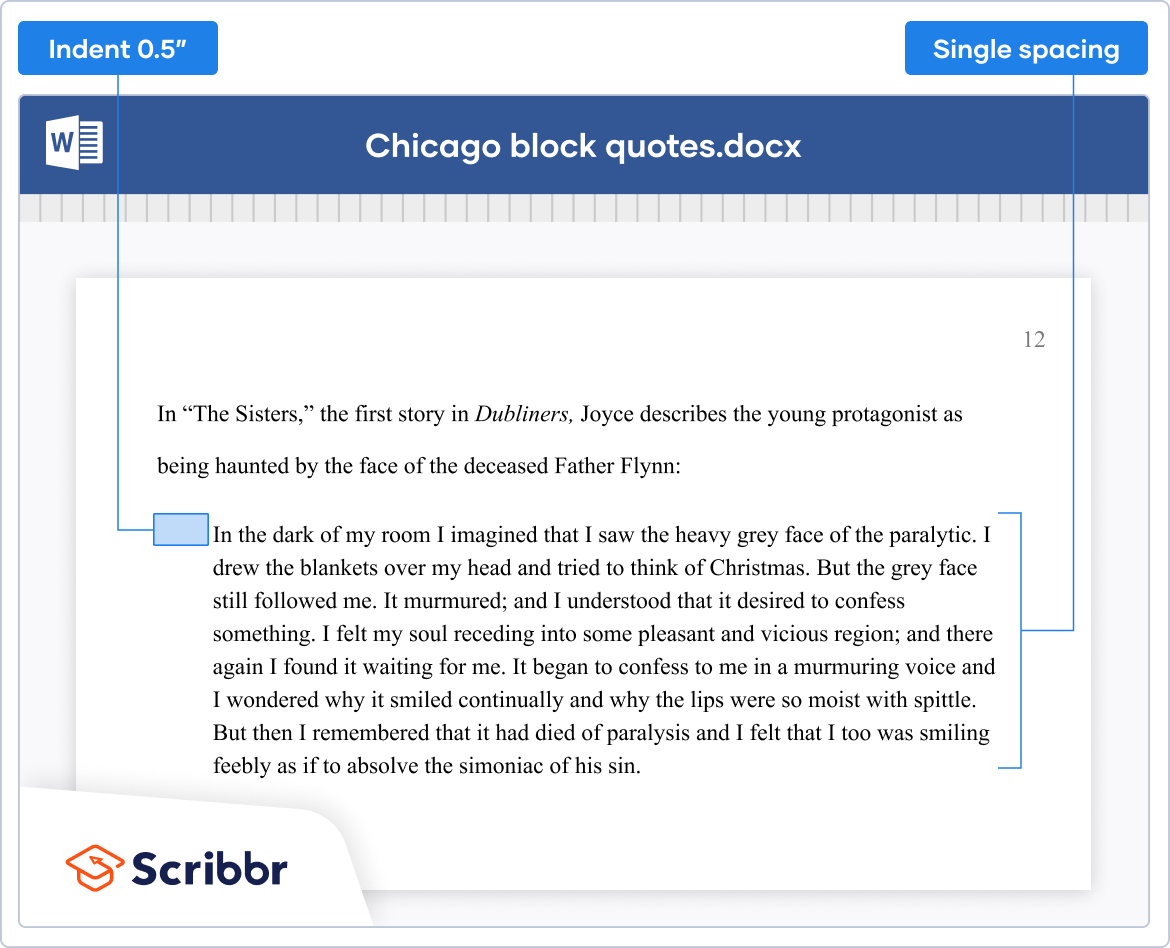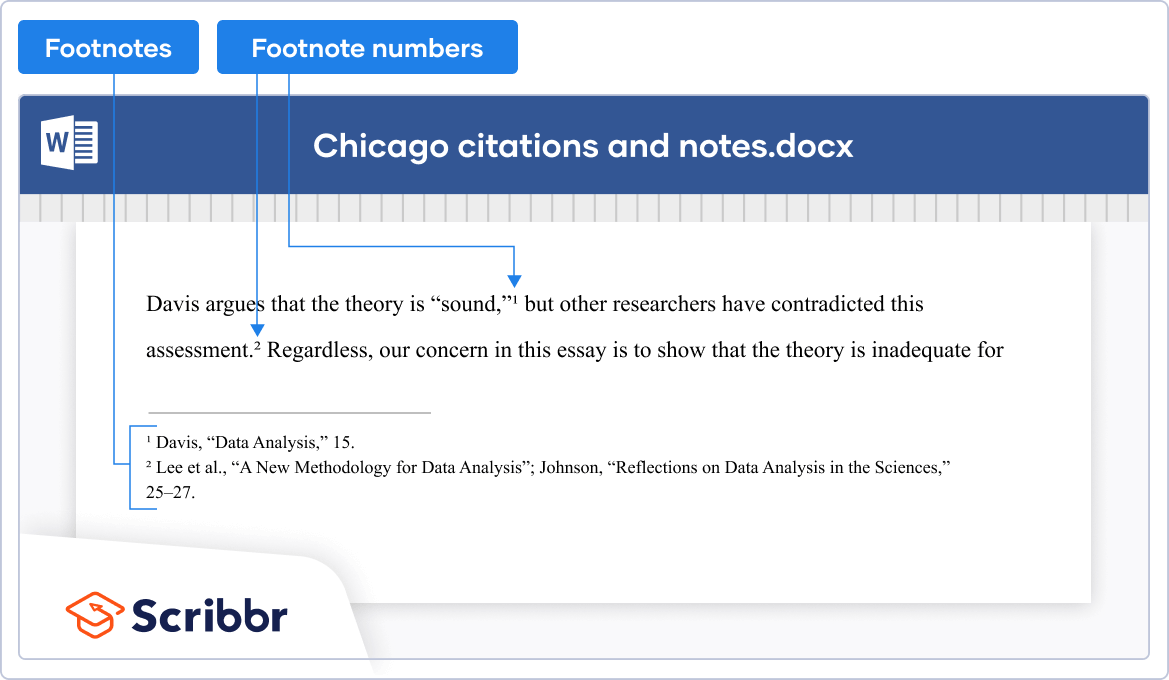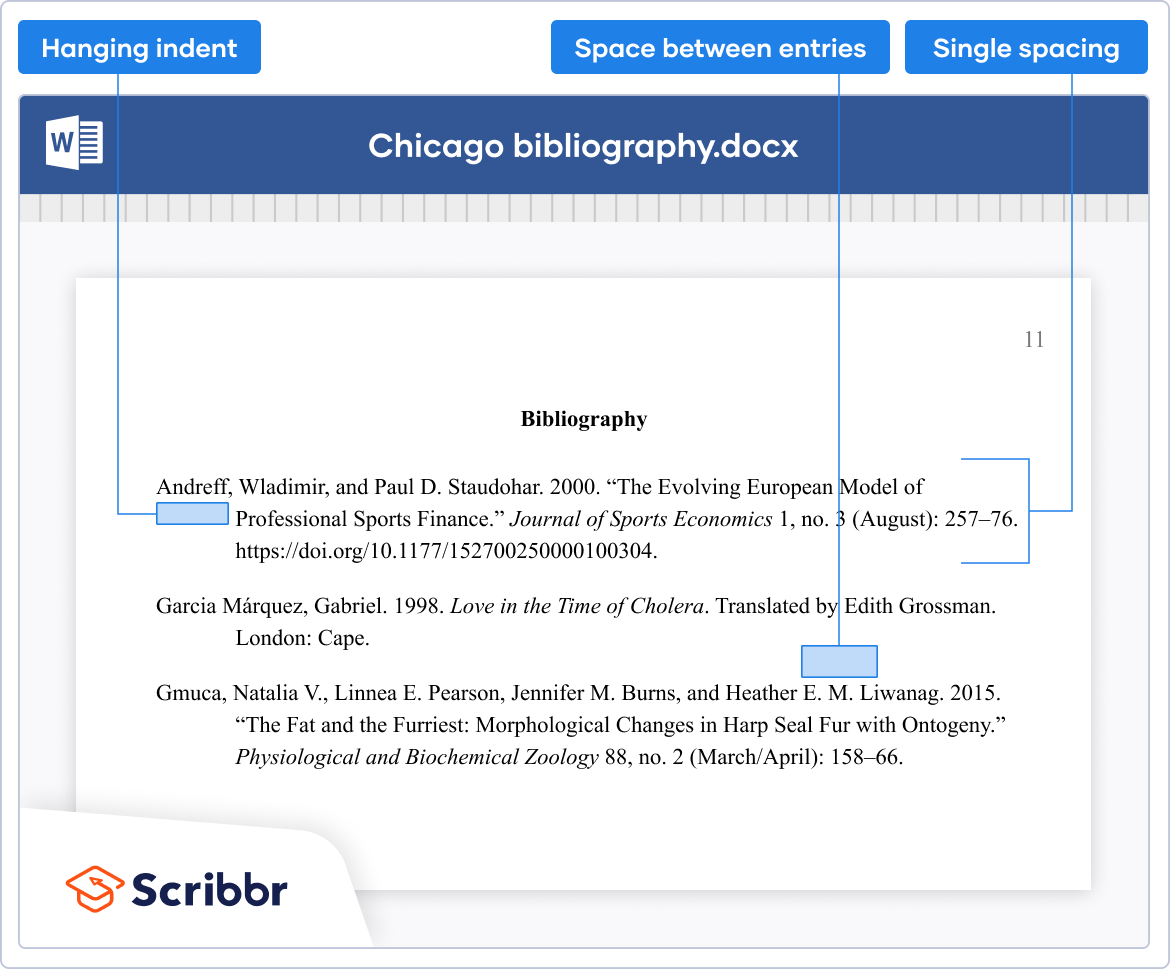Chicago Style Format for Papers | Requirements & Examples
The information in this article is largely drawn from Turabian style—a version of Chicago style aimed at students and researchers. When writing a paper in Chicago style, these are the guidelines to follow; for the sake of simplicity, the term “Chicago” is used here.
To apply Chicago format:
- Use a standard font like 12 pt. Times New Roman.
- Double-space the text.
- Use 1 inch margins or larger.
- Indent new paragraphs by ½ inch.
- Place page numbers in the top right or bottom center.
Note that any specific formatting advice from your instructor or faculty overrules these guidelines. Template documents set up in Chicago style are available to download below. Just select the one with the citation style you’re following.
Author-dateNotes and bibliography
General formatting
Chicago doesn’t require a specific font or font size, but recommends using something simple and readable (e.g., 12 pt. Times New Roman). Use margins of at least 1 inch on all sides of the page.
The main text should be double-spaced, and each new paragraph should begin with a ½ inch indent. Text should be left-aligned and not “justified” (meaning that the right margin should look ragged).
Page numbers can be placed either in the top right or the bottom center of the page—one or the other, not both.
Title page
A Chicago title page isn’t required—often it’s sufficient to just include your title at the top of the first page—but if you’re asked to include one, Turabian provides guidelines for how to present it.
All text on the title page should be center-aligned and double-spaced, and written in the same font as the rest of your text. The title should appear about ⅓ of the way down the page, in headline capitalization and in bold.
If you have a subtitle, the main title ends with a colon and the subtitle appears on the following line, also in bold and the same size as the main title.
About ⅔ of the way down the page, add any information your instructor requests you to include—your name, student code, the course name and code, the date, etc. Each new piece of information appears on a new line.
The title page should not have a page number, but should be included in the page count—in other words, the page numbering starts on page 2.
Headings
Headings should use headline capitalization:
- Summary of results
- Summary of Results
If you use different levels of heading (e.g., chapters, sections, subheadings), make sure your presentation makes clear which type of heading each one is.
All headings of one level should be presented the same way, and higher-level headings should stand out more from the text. For example, you might use a larger font for chapter headings, bold for section headings, and italics for subheadings:
Block quotes
Prose quotations of five or more lines (or more than 100 words), as well as poetry quotations of two or more lines, are presented as block quotes.
Block quotes do not use quotation marks. Instead, a blank line separates them from the surrounding text on both sides and they are indented by an additional ½ inch. Unlike the rest of the text, they are not double-spaced.
Numbers and acronyms
Chicago recommends using words, not numerals, for numbers lower than 100. For example, you would write “ninety-five,” not “95.” But numerals should still be used when you’re referring to a specific measurement (e.g., “15 cm”) and when using decimals (e.g., “1.5”).
Acronyms should be introduced the first time you refer to the thing they stand for:
After this point, you can use the acronym alone.
Neither numerals nor acronyms should be used at the beginning of a sentence. Either rewrite the sentence so that the numeral or acronym appears elsewhere, or write out the full phrase or number:
- 100 people responded to the survey.
- One hundred people responded to the survey.
- The survey received 100 responses.
In-text citations and notes
Chicago provides guidelines for not one but two citation styles: author-date and notes and bibliography.
In author-date style, citations are placed directly in the text in parentheses. In this style, you have some flexibility about how exactly to integrate the citation:
In notes and bibliography style, citations appear in Chicago footnotes or endnotes (the format is identical either way), and the reader is referred to them by superscript numbers in the text.
Footnote and endnote numbers appear at the end of the relevant clause or sentence, after any punctuation except a dash.
Endnotes appear on their own page just before the bibliography; footnotes appear at the bottom of each page. Footnotes should be separated from the text by a short rule and be presented in the same font size as the main text, or smaller. Word’s footnote function automatically creates footnotes like this:
Bibliography or reference list
At the end of your paper, you’ll likely include a bibliography (for notes and bibliography style) or a reference list (for author-date).
Bibliographies and reference lists are not double-spaced, but leave a blank line between entries.
If an entry extends onto a second line, a ½ inch indent should be applied to all but the first line of the entry.
If you have to create a Chicago style annotated bibliography, follow the same format as a normal bibliography, but indent and double-space the annotations under each source reference.
Frequently asked questions about Chicago format
- What is Turabian style?
-
Turabian style is a version of Chicago style designed specifically for students and researchers. It follows most Chicago conventions, but also adds extra guidelines for formatting research papers, theses and dissertations.
More information can be found in A Manual for Writers of Research Papers, Theses, and Dissertations by Kate L. Turabian, now in its ninth edition.
- What is the difference between a Chicago reference list and a bibliography?
-
- A reference list is used with Chicago author-date citations.
- A bibliography is used with Chicago footnote citations.
Both present the exact same information; the only difference is the placement of the year in source citations:
- In a reference list entry, the publication year appears directly after the author’s name.
- In a bibliography entry, the year appears near the end of the entry (the exact placement depends on the source type).
There are also other types of bibliography that work as stand-alone texts, such as a Chicago annotated bibliography.
- Do I have to include a bibliography or reference list?
-
In Chicago author-date style, your text must include a reference list. It appears at the end of your paper and gives full details of every source you cited.
In notes and bibliography style, you use Chicago style footnotes to cite sources; a bibliography is optional but recommended. If you don’t include one, be sure to use a full note for the first citation of each source.
- What is the difference between footnotes and endnotes?
-
Footnotes appear at the bottom of the relevant page. Endnotes appear in a list at the end of the text, just before the reference list or bibliography. Don’t mix footnotes and endnotes in the same document: choose one or the other and use them consistently.
In Chicago notes and bibliography style, you can use either footnotes or endnotes, and citations follow the same format in either case.
In APA and MLA style, footnotes or endnotes are not used for citations, but they can be used to provide additional information.
- What font should I use in a Chicago style paper?
-
Chicago format doesn’t require you to use any specific font, as long as you choose something readable. A good standard choice is 12 pt Times New Roman.
Cite this Scribbr article
If you want to cite this source, you can copy and paste the citation or click the “Cite this Scribbr article” button to automatically add the citation to our free Citation Generator.
Caulfield, J. (2024, April 09). Chicago Style Format for Papers | Requirements & Examples. Scribbr. Retrieved April 27, 2024, from https://www.scribbr.com/chicago-style/format-paper/

